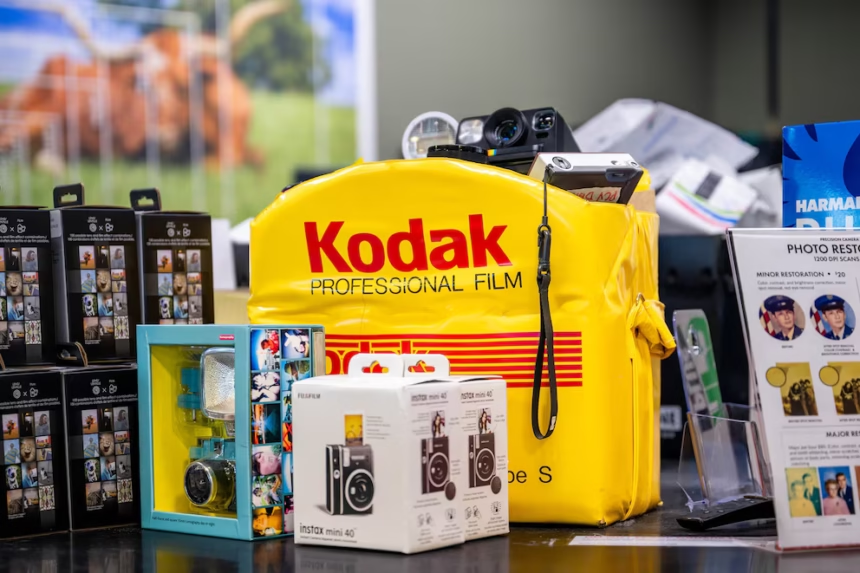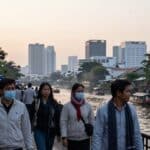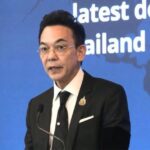NEW YORK – The Eastman Kodak Company, a fixture in photography for over a century, is once again dealing with serious financial trouble. In its second-quarter results shared on 11 August 2025, Kodak raised concerns about its ability to continue operating.
Kodac was pointing to over $470 million in debt due within the next year, and no firm funding was yet lined up to meet these payments. Despite this, the company has dismissed speculation about shutting down and says it believes in its current recovery plan.
Kodak’s latest figures show growing pressure. Revenue for Q2 2025 reached $263 million, a drop of $4 million from the same quarter last year, with gross profit falling 12% from $58 million to $51 million.
The business posted a $26 million loss for Q2, compared to a $26 million profit a year ago. Shares dropped 26% to $5.05 in trading on 12 August. At the end of Q2, Kodak reported $155 million in cash, down almost 23% from December 2024, with $70 million available in the US.
Nearly $500 million in short-term debt is now causing concern, as highlighted in a 30 June filing with the SEC. Without fresh funding or new sources of cash, Kodak could soon struggle to cover these debts. This warning, known as a “going concern” note in accounting, has triggered questions about Kodak’s future.
In reaction, the company told ABC News on 13 August that it remains positive about its plans. Kodak expects to use about $300 million from the reversal and settlement of its overfunded Kodak Retirement Income Plan (KRIP) by December 2025 to pay back much of its term loan and refinance the balance. Once this move is completed, Kodak says it will nearly clear its debt and strengthen its financial position.
Ending the Pension Plan
A key factor in Kodak’s plan centres on ending its $3.5 billion pension fund, which supports around 35,000 current and former staff. This fund, overfunded by $1.2 billion in 2022, has drawn attention since late 2024 when Kodak announced the sale of $764.4 million in hard-to-sell assets, mainly private equity, to buyers like the Mastercard Foundation for $550.6 million.
The funds raised, together with surplus assets estimated at $885 million to $975 million after clearing $2.3 billion in pension liabilities, will go towards cutting company debt.
Kodak has told retirees their pension benefits will stay the same and is offering them the choice of lump-sum payouts or annuities managed by a third-party insurer.
According to the Wall Street Journal, the current workers will have the same options at retirement. A new pension scheme is being considered, but it is not clear yet whether it will be a final salary or money purchase scheme. The switch could last more than a year and still needs board approval.
Chief Financial Officer David Bullwinkle said the company is committed to closing out pension duties by 15 August 2025. He added that management will keep pushing to reduce costs and support growth investments through the second half of the year.
Eastman Kodak’s Past and Bankruptcy Experience
Founded in 1880 by George Eastman in Rochester, New York, Kodak changed the face of photography. The launch of the Kodak #1 camera in 1888 and the Brownie in 1900 made picture-taking easy for everyone.
Kodak was also behind the world’s first digital camera in 1975 and built a giant patent catalogue with 79,000 registrations worldwide. But by the 1990s, digital cameras began to replace film, and competitors like Fujifilm started passing Kodak by.
The shift to digital hit Kodak hard. The business filed for Chapter 11 bankruptcy in January 2012. Annual sales had dropped steeply from $14.3 billion in 2004 to just $5.9 billion by 2011.
After restructuring and emerging from bankruptcy in 2013, Kodak moved away from consumer products and put its efforts into commercial printing, advanced materials, chemicals and pharmaceuticals. It also built a new pharmaceutical ingredients factory at Eastman Business Park, which is due to open by the end of 2025.
Kodak Responds to Closure Rumours
Despite facing tough conditions, Kodak insists it is not planning to close its doors. “We believe we can pay off much of our loan before it is due,” the company said in a fresh statement to ABC News about its debt and pension plans. Financial experts like Daniel Burnside at the University of Rochester’s Simon Business School say creditors often prefer extending debt rather than forcing a company into failure, raising hope for Kodak’s next steps.
Kodak remains focused on efficiency and building for the future. CEO Jim Continenza, in a Q3 2024 report, pointed out an 800% rise in net income by generally accepted accounting principles, despite a loss in revenue of $8 million. The firm has invested in apprenticeship programmes, aided by a recent $285,000 grant, hiring 600 staff over recent years and planning 50 new apprentice roles.
Kodak now faces a crucial test as it works to stabilize its finances and maintain its reputation as a leader in photography. Whether its pension surplus and new business efforts will secure its future is still unclear. For now, Kodak is battling to keep its name and legacy alive in Rochester.
Related Business News:
Neta’s Parent Company Enters Bankruptcy in China, Raising Concerns for Thai Dealers














